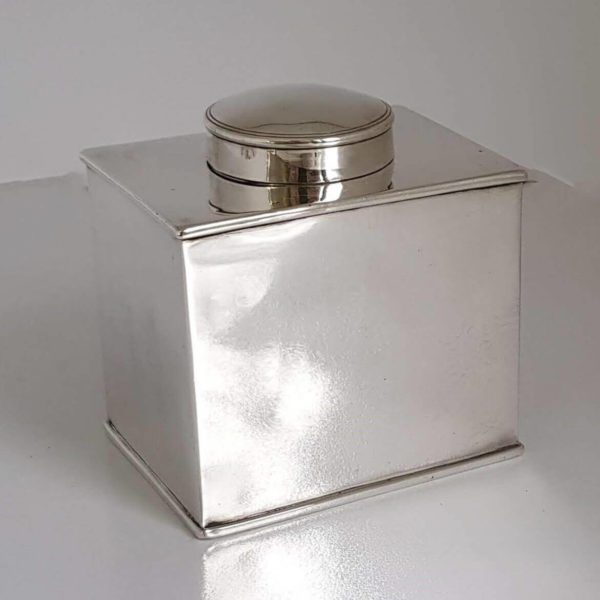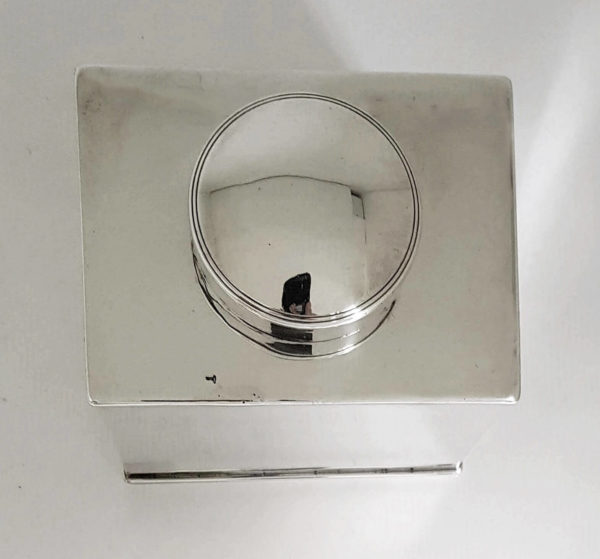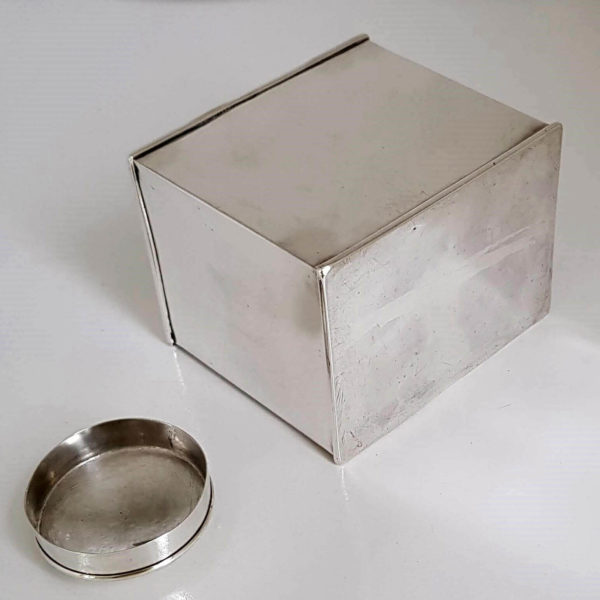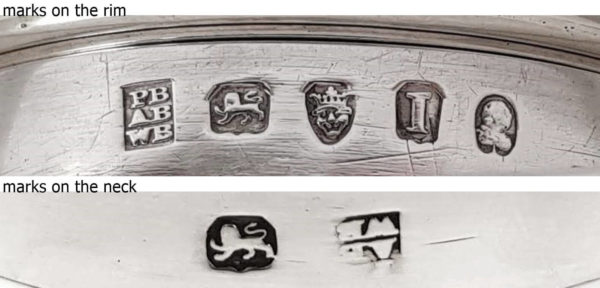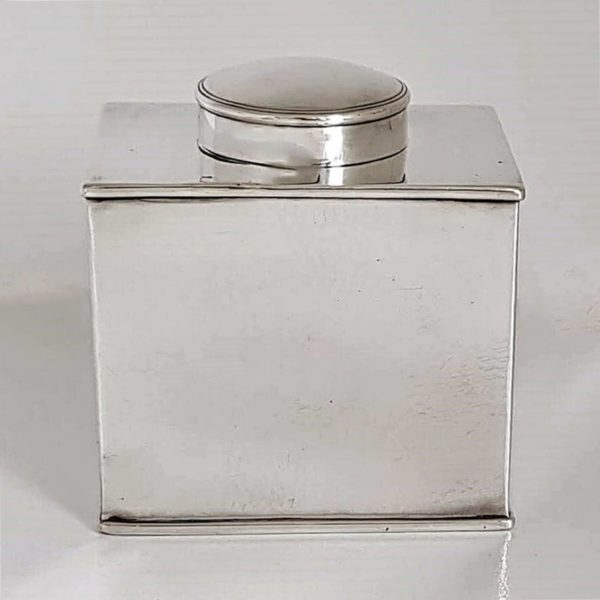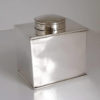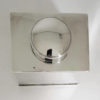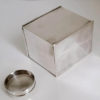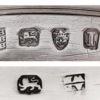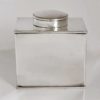George III Silver Tea Cannister
SOLD
Stock: 9730
Date: 1804
Maker: Peter‚ Ann & William Bateman
Country: England
An antique silver caddy of plain rectangular form with pull off lid. Made by the sought after Bateman family. This...
Description
Description
An antique silver caddy of plain rectangular form with pull off lid. Made by the sought after Bateman family. This cannister shape has very pleasing geometric lines.
Weight 228 grams, 7.3 troy ounces.
Height 8cm (9.2cm to top of cap).
London 1781.
Maker Peter, William & Anne Bateman.
Sterling silver.
Marks. Stamped on the neck with a full set of English silver hallmarks, the lid with lion and makers mark only. On top is a small stamp, possibly an import/duty mark.
Literature. A Tea Caddy is a box, jar, canister, or other receptacle used to store tea. The word is believed to be derived from “catty”, the Chinese pound, equal to about a pound and a third avoirdupois. The earliest examples that came to Europe were Chinese tea canisters in blue and white porcelain with china lids or stoppers. Some of the earliest silver examples have sliding bases (or tops) and the cap was used for measuring the tea. By the mid eighteenth century matching sets were available, with two caddies (for green and black tea) and a sugar bowl, all fitted into a wooden or shagreen case, often with silver mounts. During the late 1700’s the locking silver tea caddy was introduced with its own key which the lady of the house kept on the chatelaine around her waist. Double locking tea caddies in silver are rare.
Condition
The silver box is in very good condition. There are a few very minor dinks, all very negligible.
Maker Information
Maker: Peter‚ Ann & William Bateman
Peter, Anne and William Bateman were the son, daughter-in-law (widow of Jonathan) and grandson of Hester Bateman, probably the most well known of all English lady silversmiths whose work is highly collectible. Hester married the goldsmith John Bateman in 1732, and together they worked a small silversmith business. Following the death of her husband in 1760 she successfully ran her family business for thirty years and was succeeded in turn by her sons, grandson and great-grandson and the Bateman family silversmithing company lasted until the middle of the nineteenth century. Hester had at least five children - Jonathan, Peter, probably John (who may have been connected with the business, although he is only recorded as a watch and clock-maker), Letitia (who married Richard Clarke), and Ann. Only Peter, Letitia, and Ann were still living at the time of Hester's death. Hester registered her mark at Goldsmith's Hall ‘April 16, 1761, as Hester Bateman in Bunnhill Row and this mark was used until 1790. Hester died in 1794. 1790 registered mark of her sons PETER BATEMAN and JOHN BATEMAN. This partnership was of short duration as Jonathan, who married Ann Downlinff, died in 1791. 1791 registered mark PETER and ANN BATEMAN, Jonathan's widow. 1800 registered mark PETER BATEMAN, ANN BATEMAN and WILLIAM (I) BATEMAN. William Bateman was the son of Jonathan and Ann Bateman who in 1800 entered in partnership with his uncle Peter and his mother Ann. 1805, after the retirement of Ann, registered mark PETER BATEMAN and WILLIAM (I) BATEMAN. From 1815 to 1840 WILLIAM (I) BATEMAN was registered alone. From 1839 to 1843 WILLIAM (II) BATEMAN (son of William I) & DANIELL BALL.
Our Guarantee
Customer satisfaction is our primary concern
All silverware on our website is checked thoroughly prior to offering it for sale and every product listing contains a condition report and details of the silver hallmarks.
All items offered on our website include:
- Free Shipping Worldwide
- Tracked and Insured
- 14 day no quibble money back guarantee
- We are accredited members of LAPADA and conform to their strict professional standards
- We dispatch 1-3 days after receiving cleared payments
More detailed information about deliveries, returns and how to pay is available in the Help section at the bottom of this page.
